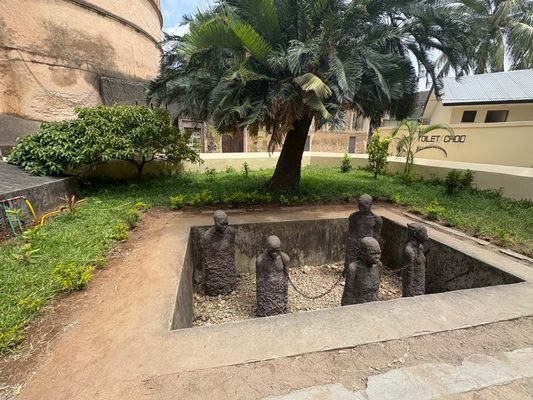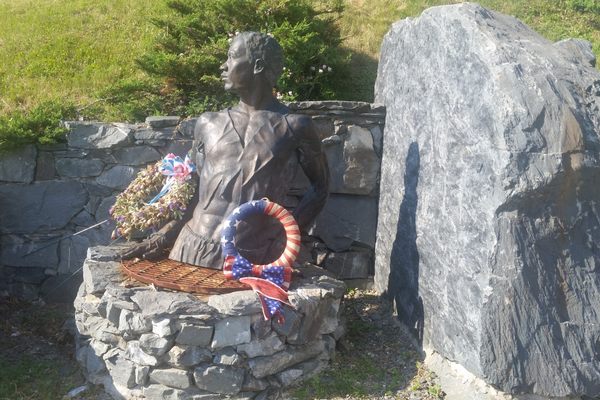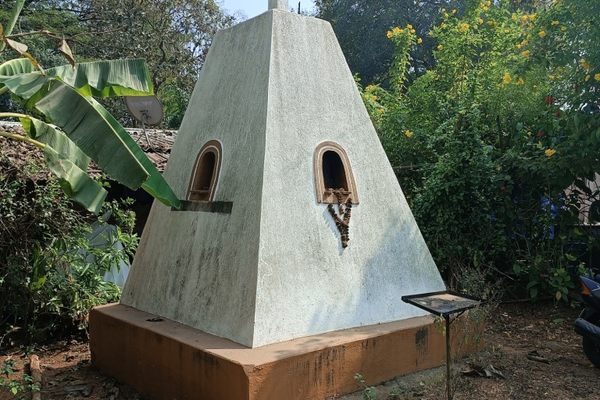About
In 1873 the world’s last open slave market closed. The last vestige of this horrific institution was located in Stone Town, Zanzibar. Enslaved people were transported to Zanzibar via overcrowded dhows. With little food, rampant disease, and appalling conditions, not all of the captives survived long enough to reach Zanzibar. Those who didn’t were thrown overboard. For those that did make it, another ordeal awaited, as they were sold at this site and then were likely shipped off to various Arab countries.
Zanzibar was home to one of the largest slave markets in the world. Although the slave trade took place all over the island, three major markets saw the bulk of these inhumane transactions. The market in Stone Town was infamous for being the most brutal. The pit and the Slave Market Memorial is in the same location where enslaved people were gathered to be brought and sold. This memorial was created in 1998 by Clara Sornas of Scandinavia.
On one side of the memorial is a mansion housing the slave cellar, one of fifteen low-ceiling chambers. Dim, suffocating, and with no toilets, these chambers were crammed with enslaved people, where they awaited the auction block. Captives were summoned to the yard and marched to the pit. There, they would be inspected by potential buyers.
On the other side of the memorial is an Anglican church, from which you can see a mosque. A circle of white stones at the altar marks the place where the whipping post once stood The value of enslaved people on Zanzibar was often based on how much pain they could endure at this post. An outer circle of red stones represents the bloodshed that took place. Unveiled in 1998, the Slave Market Memorial is a reminder of the sordid history of this island.
Related Tags
Community Contributors
Added By
Published
October 1, 2020





































